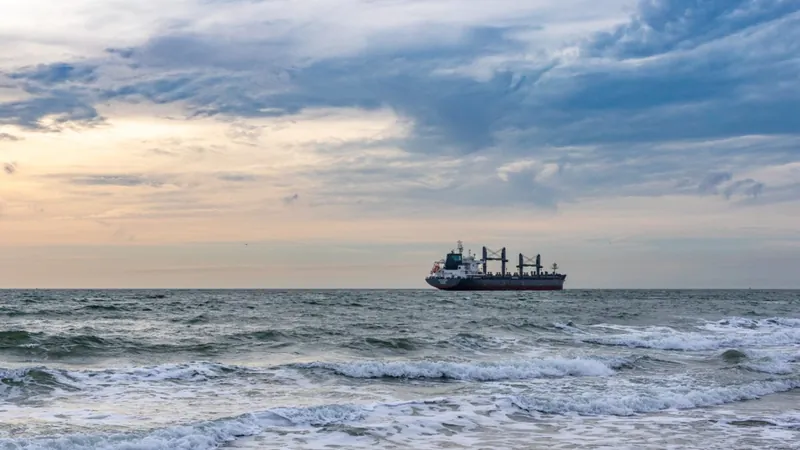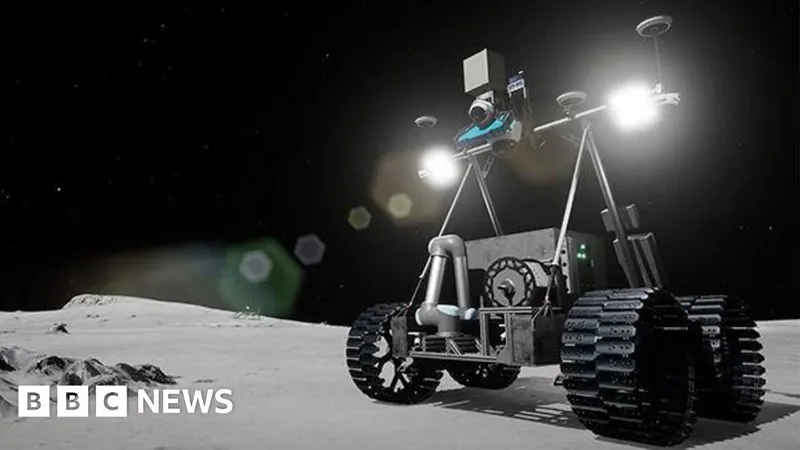
Mind-Blowing Discovery: North Sea Seabed Is Upside Down!
2025-08-25
Author: Michael
Prepare to have your geological knowledge shaken! A groundbreaking new study has revealed that parts of the North Sea seabed are turned on their heads, challenging long-held beliefs about sediment layers beneath the ocean.
Researchers from Norway and the UK have unearthed staggering mounds of sand that have swapped positions with older geological layers, creating a phenomenon dubbed "sinkites." This striking discovery marks the largest known stratigraphic inversion ever recorded!
Dr. Mads Huuse, a geologist from the University of Manchester, expressed his astonishment: "We’ve found structures where dense sand has sunk into lighter sediments, flipping the conventional layers we’d expect to see and creating colossal mounds beneath the sea." Imagine mounds high enough to rival the tallest buildings!
Ancient Sand Chunks Beneath Our Feet
Using advanced 3D imaging and direct rock samples, Huuse and his team delved into these massive sand structures, which stretch for kilometers and soar to heights of several hundred meters. Their research, published in *Communications Earth and Environment*, reveals tantalizing insights into the region's prehistoric past.
Geological Mysteries: How Did This Happen?
The scientists believe these sinkites originated during tumultuous geological events in the Late Miocene to Pliocene epochs, roughly 10.4 to 1.6 million years ago. The theory suggests that shifting tectonic pressures and earthquakes may have liquefied the sand, causing it to plunge into fractures in the seabed. This would have forced the porous ooze rafts—layered sediments abundant with marine fossils—to rise to the surface, completely flipping the order of the layers we thought we understood.
Huuse asserts, "This research illustrates the unexpected ways fluids and sediments can behave within the Earth’s crust. Understanding the formation of sinkites is vital for assessing underground reservoirs and fluid migration—key elements for carbon capture and storage initiatives."
A Climate Solution on the Horizon?
As climate change continues to escalate, capturing and storing carbon emissions has become critically important. Notably, the world's first commercial carbon storage project recently stored CO2 beneath the North Sea, raising questions about the safety of this endeavor. The study's findings could have significant implications for where we place these important carbon storage projects and our ability to predict locations of trapped oil and gas.
In the words of Huuse, "Although there are skeptics regarding this new model, many support it. Only time and further research will reveal just how applicable this groundbreaking model truly is."









 Brasil (PT)
Brasil (PT)
 Canada (EN)
Canada (EN)
 Chile (ES)
Chile (ES)
 Česko (CS)
Česko (CS)
 대한민국 (KO)
대한민국 (KO)
 España (ES)
España (ES)
 France (FR)
France (FR)
 Hong Kong (EN)
Hong Kong (EN)
 Italia (IT)
Italia (IT)
 日本 (JA)
日本 (JA)
 Magyarország (HU)
Magyarország (HU)
 Norge (NO)
Norge (NO)
 Polska (PL)
Polska (PL)
 Schweiz (DE)
Schweiz (DE)
 Singapore (EN)
Singapore (EN)
 Sverige (SV)
Sverige (SV)
 Suomi (FI)
Suomi (FI)
 Türkiye (TR)
Türkiye (TR)
 الإمارات العربية المتحدة (AR)
الإمارات العربية المتحدة (AR)